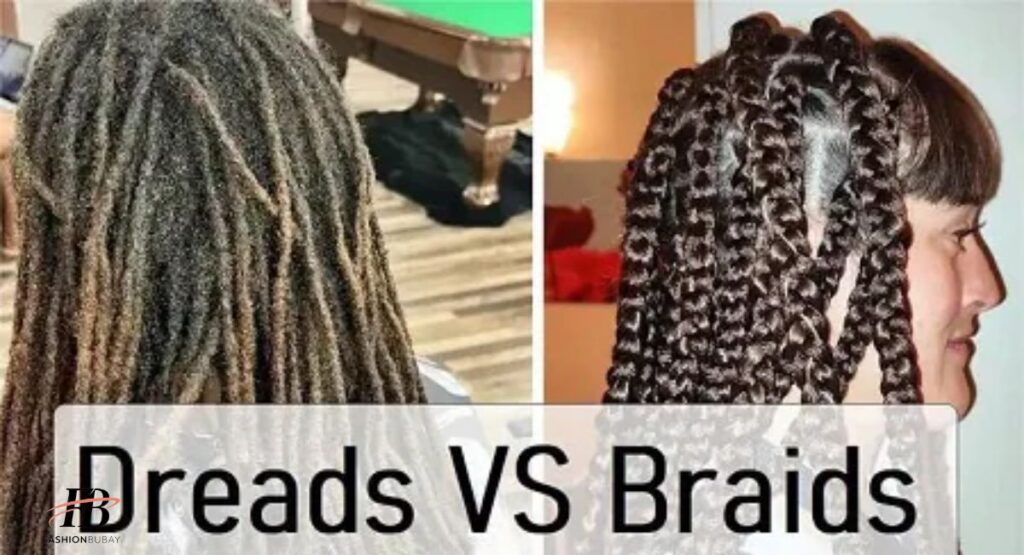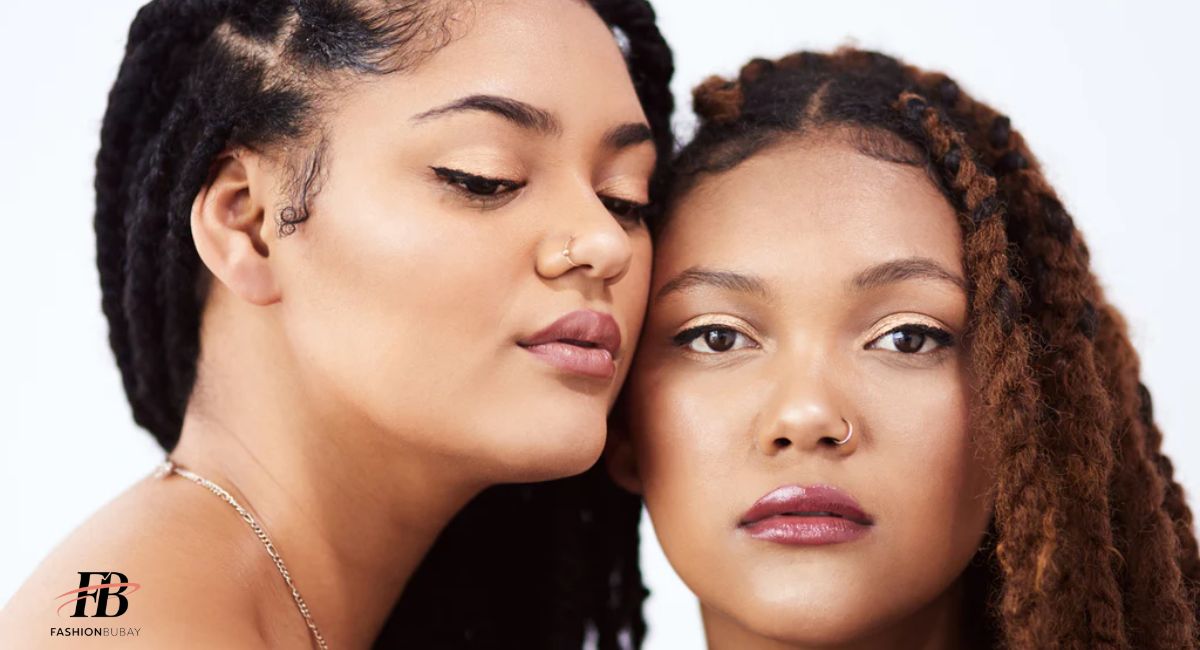Dreads and braids are popular hair choices but they are not the same. Dreadlocks form naturally as hair tangles and mats together. Braids on the other hand involve weaving hair into patterns. Both styles have deep cultural roots and distinct appearances. Understanding their differences can help you choose the best one for you.
Dreadlocks can be created through various techniques like backcombing or crocheting. They require less frequent maintenance but need special care to keep them looking good. Braids are easier to change and style offering more versatility. They can be undone and redone with new patterns as often as you like. Each style has its own appeal and suits different needs.
What’s the Difference? Dreads and Braids Unraveled

Dreadlocks form naturally as hair tangles and mats together over time. They create cylindrical, rope-like strands with a rough texture. Braids are made by weaving hair into various patterns resulting in a flatter and more structured look. While dreads need less frequent styling changes braids offer more versatility and can be easily redone.
Dreadlocks:
- Form naturally over time.
- Hair tangles and mats together.
- Create cylindrical, rope-like strands.
- Require less frequent styling changes.
- Have a rough, matted texture.
Braids:
- Created by weaving hair in patterns.
- Involves intertwining three or more strands.
- Produce a flatter, more structured look.
- Offer many styling options and patterns.
- Can be undone and redone easily.
Formation Techniques: From Backcombing to Box Braids
Dreadlocks can form naturally as hair tangles and mats without interference. For a quicker start, you can use backcombing to tease hair into knots. Another method involves using a crochet hook to twist and lock the strands. Twist and rip is another technique, where hair is twisted and allowed to lock over time.
Braids are made by sectioning hair and weaving it into patterns. You can create styles like French braids or box braids with different weaving techniques. Each braid style has its own unique look and requires practice to perfect. While braids can be undone and redone, they need to be maintained to stay neat.
Both dreads and braids require different skills and time. Dreadlocks form over time and can be low-maintenance. Braids need more regular upkeep but offer more styling options. Choosing the right method depends on your desired look and how much effort you want to put in.
Read This Blog: Jonathan Owens Net Worth: Know The Updated Wealth of NFL Player
Styling Versatility: Matted Ropes or Intricate Patterns?
Dreadlocks have a distinct matted texture that limits how you can style them. They naturally maintain their look with minimal changes. You can add accessories like beads or wraps but the overall style remains consistent. Dreads are a low-maintenance option for a more uniform appearance.
Braids however offer much more versatility. You can create various patterns such as French Dutch or fishtail braids. Adding beads ribbons or other accessories allows for a wide range of looks. This flexibility means you can easily switch up your style and experiment with different designs.
The Maintenance Showdown: What Does Each Style Demand?

Dreadlocks need regular washing and can take longer to dry requiring occasional retightening. Braids are easier to maintain drying quickly and needing only occasional redo for upkeep.
Washing Frequency:
- Dreadlocks should be washed every 1-2 weeks using a residue-free shampoo.
- Braids can be washed more frequently since they are not as permanent and can handle more frequent washing.
Drying Time:
- Dreadlocks take longer to dry completely because of their thickness and matted texture.
- Braids dry faster once they are removed or loosened, making the drying process quicker and easier.
Retightening Needs:
- Dreadlocks may need occasional retightening to maintain their shape and prevent loosening.
- Braids simply need to be redone when they start to loosen or become messy requiring less frequent adjustments.
Product Use:
- Dreadlocks often require special products like wax or oils to maintain their look and prevent frizz.
- Braids generally need less product focusing mainly on keeping the hair clean and occasionally using light styling products.
Overall Routine:
- Dreadlocks have a more involved maintenance routine, requiring regular care and specific products.
- Braids have a simpler routine with less frequent upkeep and easier management especially since they are temporary.
Longevity Loyalties: Dreads for Life or Braids for Now?
Dreadlocks are a long-term commitment and can last for years with proper care. They evolve and grow over time becoming a lasting part of your look. This style suits those who prefer a permanent low-maintenance option. Dreads are ideal for people ready for a long-term hair journey.
Braids offer a temporary style that usually lasts from a few weeks to a couple of months. They allow for frequent changes and new looks without long-term commitment. This makes them perfect for those who love to experiment with their appearance. Braids are a flexible choice for a dynamic and changeable hairstyle.
Choosing between dreads and braids depends on your lifestyle and preferences. Dreads provide a lasting steady look while braids offer variety and short-term flexibility. Consider how much change you want and how permanent you want your style to be.
Frequently Asked Question
Which is better, dreads or braids?
It depends on your preference. Dreads are long-lasting and low-maintenance but are permanent. Braids offer versatility and frequent style changes but are temporary. Choose based on how much change and maintenance you prefer.
Does hair grow faster in locs or braids?
Hair growth rate is similar in both locs and braids. Neither style significantly affects how fast your hair grows. Growth depends more on overall hair care and health.
Is twisting or braiding hair better?
Twisting and braiding both have their benefits. Twisting is good for natural curls and creates a different texture. Braiding offers more styling options and can last longer. Choose based on the look and maintenance you prefer.
What’s the difference between dreadlocks and twisted hair?
Dreadlocks are formed by matting hair over time or using techniques like backcombing. Twisted hair involves twisting sections of hair into spirals. Dreads are more permanent, while twists are usually temporary.
Conclusion
In the debate between dreads and braids each style offers unique benefits. Dreadlocks provide a long-lasting low-maintenance option with a distinct look that evolves over time. They require careful washing longer drying times and occasional retightening, but they become a permanent part of your hairstyle. This makes dreads ideal for those seeking a steady and enduring style.
On the other hand braids offer versatility and flexibility. They can be easily changed and styled in various patterns allowing for frequent updates to your look. Braids require less intensive maintenance and can be washed more often drying quickly and needing only occasional redo. This temporary style suits those who love experimenting and changing their hairstyle often. Ultimately the choice between dreads and braids depends on your personal preference for permanence versus flexibility.











